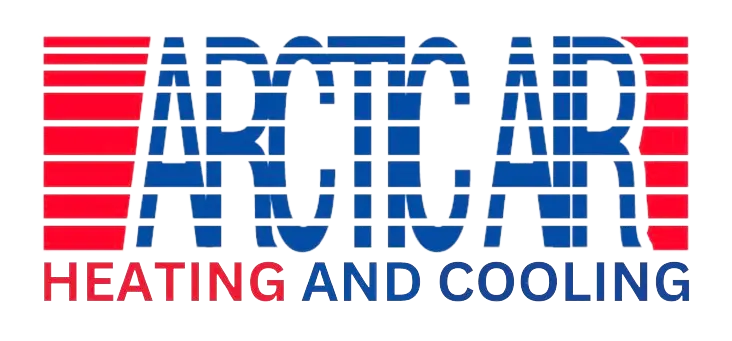Air balancing can increase air quality, boost energy efficiency and improve the overall performance of your heating and air conditioning system. For a homeowner it means supplying each space with the right amount of air (hot or cold), making your home more comfortable.
What is Air Balancing?
Air balancing is a process that involves modifying your existing HVAC system to make sure that air is evenly distributed throughout the home. All zones will have the correct amount of heat transfer and cooling. You want all components of your HVAC system working in harmony to get the most out of your HVAC system.
Interested in the idea (it’ll save you money too, more about that later)? Here we are going to break down the air balancing process into easy, do-it-yourself tips, harder may need some skill tips, and things an HVAC professional can do to help.
Top Tips for Balancing the Temperatures in Your Home
Easy DIY Ideas
Adjust Your Registers
This one is a simple yet effective air balancing ‘trick. In most homes with registers you have the ability to move the damper blade. It will restrict air flow in the room. But, don’t completely close the vents, it could cause other issues with your HVAC system.
During warm weather, open registers on your upper floor and partially close registers on first floor and / or your basement. During cold temperatures, reverse the process.
Here’s a quick, handy guide to get your system properly balanced for each season:
- Step 1: Set your main thermostat to 76-78 degrees. (ideal range to start testing)
- Step 2: Leave the temperature alone for at least 24 hours.
- Step 3: In areas that are too cool, adjust the vents to allow for less air flow.
- Step 4: Adjust in small increments to feel what works for your comfort.
- Step 5: Re-check your adjustments (24 hours later) to see if you reached the desired temperature.
- Step 6: Rinse and repeat until you reach your ideal temperature.
Try a 2 Degree Offset
If you’re in a two-story home and have two thermostats, set the temperatures to have a 2 degree off-set.
Here’s what we mean…
Set the thermostat at a 2-degree difference for the floors. For example, upstairs could be set at 74 degrees and downstairs at 72. This will help with uneven temperatures.
Avoid Placing Big Electronic Equipment Near Thermostats
Larger electronic equipment throws off a lot more heat than you might realize. Nowadays with the addition of big screen TVs, gaming systems and multiple computers, your thermostat can get thrown out of whack fast, leading to it failing to trigger your HVAC system to heat or cool according to the temperature of the rest of the room.
To prevent this problem, ensure that your thermostat(s) are placed in spots where they are away from heat generating appliances to allow them to ‘get’ an accurate temperature read.
Prevent Airflow Restrictions
Do not cover registers with furniture or items that will restrict air flow. When you block a vent with furniture your system has to work harder. Vents are there to supply free flow of air.
Ideally your vents need 18 inches of space. Rearrange your furniture and hem your curtains so you can provide them with the air flow they need. If you have no other choice, invest in a magnetic air deflector, so that the air blows away from the nearby furniture.
Not so do-it yourself air balancing tips…
Fix any duct work damage and or defects.
If the duct air flow system in your home is out of balance you will find that when running your heating some rooms are not warm enough while others are too cool. While in air conditioning mode, you’ll find similarly that some rooms are not cool enough while others are too warm.
Depending on your skill you could:
- fix loose duct joints by refitting and sealing the junction.
- look for ductwork with sharp turns
- insulate or seal the ducts
Unless you really know what you are doing here though it’s best to call in an HVAC professional to investigate any suspected ductwork problems.
Check and Adjust the System’s Blower Fan Speed
Switching the fan speed can be easy if you know what you are doing.
The steps include…
- disconnecting the power
- locating the blower motor and wiring
- identifying the speed wires
- changing the active speed wire
- testing your HVAC system
Again, this is something usually best left to professionals.
What Air Balancing Can Do for You Today
Efficiency
- Improve air circulation
- Less conditioned air escapes
- Lower energy bills because unbalanced air systems cause stress and overwork
- Optimized system performance – increase energy efficiency
- Longer lifespan for HVAC equipment
Better Indoor Air Quality
- When your air circulation is bad contaminants build up in the air
- Creates a healthier environment
- Equalizes pressure
- Prevents dirt/dust/mold from clogging systems
Improved Comfort
- Getting rid of cold/hot spots will lead to overall greater comfort
- Humidity control
Final Word
Air balancing is a method of testing your heating and cooling system to spot any problems that are causing uneven airflow or negative air pressure. By doing this, every room in your home will be as comfortable as possible with the equipment you have.
Balancing your central heating minimizes energy consumption and evens temperatures in each room. For the best results, get professional help. To check the air balance, HVAC technicians will test your system’s performance and then make all the right recommendations and adjustments to help ensure that you (and your home) really are getting the most out of your HVAC system.

